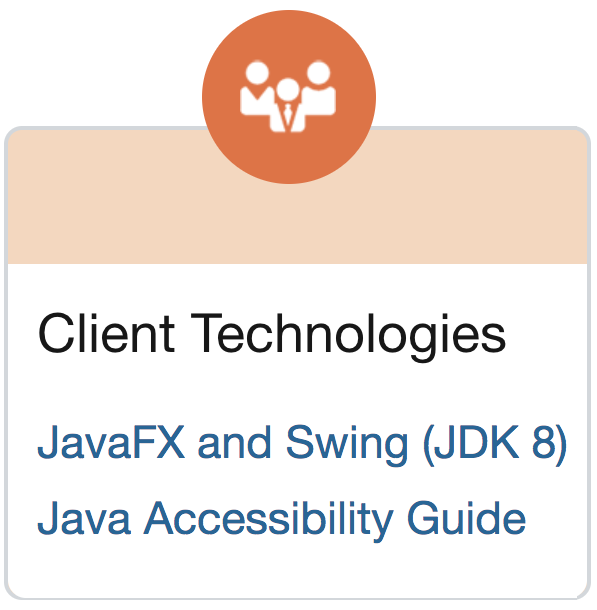In everyday discussions, some programmers use these terms interchangeably, but there is a difference between Java platforms, editions, versions, and technologies. This section is focuses on explaining it.
Java platforms, editions, versions, and technologies
Platforms and editions
We hear the term platform almost every day. Its meaning changes depending on the context, but in the most general sense, it means a device or environment that allows someone to do something. It serves as a foundation, an environment, a platform. In the information technology realm, a platform provides an operating environment where a software program can be developed and executed. An operating system is a typical example of a platform. Java has its own operating environment, which comes, as we have mentioned in the previous sections, in four platforms (and six editions):
- Java Platform Standard Edition (Java SE): This is the edition most people mean when they say Java. It includes JVM, JCL, and other tools and utilities that allow for the development and deployment of Java applications on desktops and servers. In this book, we are going to stay within the boundaries of this edition, and will mention the other editions only in this section.
- Java Platform Enterprise Edition (Java EE): This is composed of Java SE, servers (computer programs that provide services to the applications), enhanced libraries, code samples, tutorials, and other documentation for developing and deploying large-scale, multitiered, and secure network applications.
- Java Platform Micro Edition (Java ME): This is a small-footprint (using little resources) subset of Java SE, with some specialized class libraries for developing and deploying Java applications for embedded and mobile devices – phones, personal digital assistants, TV set-top boxes, printers, sensors, and so on. There is also a variation of Java ME for Android programming (with its own JVM implementation), developed by Google. It is called Android SDK.
- Java Card: This is the smallest of the Java platforms, for developing and deploying Java applications onto small embedded devices, such as smart cards. It comes in two editions (quotes are taken from the official Oracle documentation found at http://www.oracle.com/technetwork/java/embedded/javacard/documentation/javacard-faq-1970428.html#3):
- Java Card Classic Edition, which
targets smart cards as deployed today on all vertical markets, based on ISO7816 and ISO14443 communication.
- Java Card Connected Edition, which is developed
to support a web application model, with servlets running on the card, and TCP/IP as basic protocol
andruns on high-end secure microcontrollers, typically based on a 32-bit processor and supporting a high-speed communication interface like USB
.
- Java Card Classic Edition, which
Versions
Since its first release in 1996, Java has evolved through nine major versions:
- JDK 1.0 (January 23, 1996)
- JDK 1.1 (February 19, 1997)
- J2SE 1.2 (December 8, 1998)
- J2SE 1.3 (May 8, 2000)
- J2SE 1.4 (February 6, 2002)
- J2SE 5.0 (September 30, 2004)
- Java SE 6 (December 11, 2006)
- Java SE 7 (July 28, 2011)
- Java SE 8 (March 18, 2014)
- Java SE 9 (September 21, 2017)
- Java SE 10 (March 20, 2018)
There are several suggestions regarding changing the Java versioning scheme. Since Java 10, a new time-based versioning $YEAR.$MONTH of JDK has been introduced. Also, a new Java version is planned to be released every six months, in March and in September of each year. So, Java 11 will be released in September 2018, with JVM version 18.9. We will show you how to display which JDK version you are using shortly.
Technologies
The word technology is overloaded. Programmers use it for almost anything. If you look at Oracle's list of Java technologies (https://www.oracle.com/java/technologies/index.html), you will find the following list:
- Embedded, which includes all of the previously listed Java platforms except for Java EE, with some modifications, usually with a smaller footprint and other optimizations
- Java SE, which covers Java SE and Java SE Advanced, which includes Java SE and some monitoring and management tools for an enterprise level (larger than just a development computer) installation
- Java EE, as described previously
- Cloud, which includes cloud-based reliable, scalable, and elastic services
But in the Oracle glossary (http://www.oracle.com/technetwork/java/glossary-135216.html), the following technologies are added to the list:
- JavaSpaces: A technology that provides distributed persistence
- Jini Technology: An Application Programming Interface (API) that enables the networking of devices and services automatically
Elsewhere, on the front page of the Oracle Java 10 documentation (https://docs.oracle.com/javase/10), client technologies are listed as follows:

Meanwhile, in the Oracle Java tutorial (https://docs.oracle.com/javase/tutorial/getStarted/intro/cando.html), Java Web Start and Java Plug-In are mentioned as deployment technologies for deploying your applications to end users.
However, the biggest list of Java technologies that Oracle provides is on the page dedicated to the Technology Network (http://www.oracle.com/technetwork/java/index.html). In addition to Java SE, Java SE Advanced and Suite, Java Embedded, Java EE, Java FX, and Java Card, there are also listed Java TV, Java DB, and Developer Tools. If you go to the Java SE or Java EE pages, under the Technologies tab, you will find more than two dozens APIs, and various software components listed as technologies, too. So, one should not be surprised to find anywhere any kind of list of Java technologies.
It seems that anything related to Java has been called a technology at least once, somewhere. To avoid further confusion, from now on, in this book, we will try to avoid using word technology.



